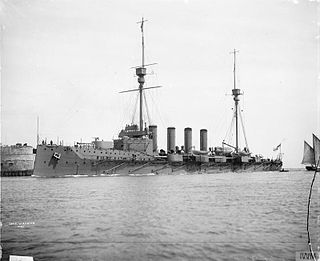Innes McCartney | |
|---|---|
 | |
| Born | 24 March 1964 (age 60) |
| Education | |
| Occupation(s) | Nautical archaeologist, historian |
Innes McCartney (born 1964) is a British nautical archaeologist and historian. He is a Visiting Fellow at Bournemouth University in the UK.
Innes McCartney | |
|---|---|
 | |
| Born | 24 March 1964 (age 60) |
| Education | |
| Occupation(s) | Nautical archaeologist, historian |
Innes McCartney (born 1964) is a British nautical archaeologist and historian. He is a Visiting Fellow at Bournemouth University in the UK.
McCartney is a nautical archaeologist specializing in the interaction of shipwreck archaeology with the historical record. [1]
In 1999, he discovered the 12-inch-gunned submarine HMS M1 off Start Point in the English Channel. [2]
In 2001, he discovered the wreck of HMS Indefatigable, sunk at the Battle of Jutland. [3] In the same year he led expeditions to identify some of the U-boats sunk during Operation Deadlight. Fourteen U-boats were surveyed and several new sites discovered. [4] [5]
In 2003 he identified the mystery World War I U-boat off Trevose Head, Cornwall, as UB-65 [6] by scraping the propellers to reveal the shipyard stamp. This proved that even at a depth of 60 metres (200 ft), war graves of this type can be identified by divers without the need to scavenge parts from them. This featured in the Channel 4 series Wreck Detectives .
In 2006 he featured in the documentary U-boat Death-Trap which followed his search for the identity of three mystery U-boats off the north coast of Cornwall. In the same year he discovered the German auxiliary raider HSK Komet in the English Channel. [7] At the time, it was the only known example of this type of warship anywhere in the world.
In 2008 he found the White Star Line transport SS Armenian off the Scilly Isles. [8] [9]
In 2012 McCartney worked alongside wreck hunter David Mearns on an archaeological investigation of the wreck of HMS Hood (51), sunk in 1941. This project was supported by philanthropist Paul Allen aboard his yacht Octopus . The expedition findings were featured in the Channel Four documentary, How the Bismarck sank HMS Hood. [10]
2015 saw publication of The Maritime Archaeology of a Modern Conflict: comparing the archaeology of German submarine wrecks to the historical text. [11] It shows the extent to which historical sources relating U-boat losses in UK waters in both world wars differ from the actual distribution of the known and identified wrecks. Over 40% of those investigated had no historical precedent. The accuracy of the historic text fell as low as 36% during 1945.
In 2015 and 2016 McCartney worked as archaeological advisor to the Sea War Museum Jutland on detailed archaeological shipwreck surveys to locate all of the heretofore undiscovered wrecks of the Battle of Jutland. This was published in Jutland 1916: The Archaeology of a Naval Battlefield, [12] for which he was awarded the 2016 Anderson Medal by the Society for Nautical Research.
The British submarine HMS Tarpon (N17) was also located during the North Sea surveys in 2016. [13]
In 2016, McCartney helped Scottish Power identify a World War I UB-III Class U-boat off the Wigtownshire coast which was found during the seabed survey for an undersea power cable between England and Scotland. [14] McCartney has suggested the wreck is UB-82, or possibly UB-85, which were both sunk after attacks by British patrol boats in April 1918. [15]
In 2017 he assisted the Sea War Museum Jutland in a detailed survey of the Scapa Flow naval anchorages. [16] The results were published in May 2019 in SCAPA 1919: The Archaeology of a Scuttled Fleet. [17]
In May 2020 it was announced that the wreck of the landing craft LCT 326 had been found off Bardsey Island during surveys by Bangor University, in collaboration with McCartney. The wreck is located over 100 nautical miles (190 km; 120 mi) from its supposed loss position. [18] [19] [20] In September 2021 as part of the same project, it was announced that the minesweeper HMS Mercury had been found in the Irish Sea. It sank in 1940 during sweeping operations. [21]
In September 2022 it was announced that the wreck of the liner SS Mesaba had been identified by McCartney in the Irish Sea during surveys by Bangor University. The ship is famous for having radioed an ice warning, picked up by RMS Titanic which later struck an iceberg and sank with high loss of life in the North Atlantic Ocean. [22] SS Mesaba was sunk by German submarine UB-118 on 1 September 1918. SS Mesaba, LCT 326 and HMS Mercury are examples of the 273 shipwrecks surveyed by Bangor University and assessed by McCartney in a Leverhulme Trust-funded research project, published as a single-authored monograph, Echoes from the Deep. [23] The project led to the naming of 87% of the wrecks surveyed. [23]

Operation Deadlight was the code name for the Royal Navy operation of November 1945 – February 1946 to scuttle German U-boats surrendered to the Allies after the defeat of Germany near the end of World War II.
German submarine U-413 was a Type VIIC U-boat built for Nazi Germany's Kriegsmarine for service during World War II.

Scapa Flow is a body of water in the Orkney Islands, Scotland, sheltered by the islands of Mainland, Graemsay, Burray, South Ronaldsay and Hoy. Its sheltered waters have played an important role in travel, trade and conflict throughout the centuries. Vikings anchored their longships in Scapa Flow more than a thousand years ago. It was the United Kingdom's chief naval base during the First and Second World wars, but the facility was closed in 1956.

HMS Warrior was a Warrior-class armoured cruiser built for the Royal Navy in the first decade of the 20th century. She was stationed in the Mediterranean when the First World War began and participated in the pursuit of the German battlecruiser SMS Goeben and light cruiser SMS Breslau. Warrior was transferred to the Grand Fleet in December 1914 and remained there for the rest of her career. She was heavily damaged during the Battle of Jutland in 1916, after which she withdrew and was later abandoned and sank in a rising sea.

HMS A3 was an A-class submarine built for the Royal Navy in the first decade of the 20th century. She sank in 1912. The wreck is a Protected Wreck managed by Historic England.

HMS Defence was a Minotaur-class armoured cruiser built for the Royal Navy in the first decade of the 20th century, the last armoured cruiser built for the Royal Navy. She was stationed in the Mediterranean when the First World War began and participated in the pursuit of the German battlecruiser SMS Goeben and light cruiser SMS Breslau. The ship was transferred to the Grand Fleet in January 1915 and remained there for the rest of her career.

SM UB-81 was a German Type UB III submarine or U-boat in the German Imperial Navy during World War I. She was commissioned into the German Imperial Navy on 18 September 1917 as SM UB-81.

Mensun Bound is a British maritime archaeologist born in Stanley, Falkland Islands. He is best known as director of exploration for two expeditions to the Weddell Sea which led to the rediscovery of the Endurance, in which Sir Ernest Shackleton and a crew of 27 men sailed for the Antarctic on the 1914–1917 Imperial Trans-Antarctic Expedition. The ship sank after being crushed by the ice on 21 November 1915. It was rediscovered by the Endurance22 expedition on 5 March 2022.

HMS Sparrowhawk was an Acasta-class destroyer built in 1912 and sunk in 1916 at the Battle of Jutland after a collision with the destroyer leader HMS Broke.
German submarine U-1021 was a Type VIIC/41 U-boat of Nazi Germany's Kriegsmarine during World War II.
SM UB-65 was a Type UB III U-boat of the Imperial German Navy during World War I. Ordered on 20 May 1916, the U-boat was built at the Vulkan Werke shipyard in Hamburg, launched on 26 June 1917, and commissioned on 18 August 1917, under the command of Kapitänleutnant Martin Schelle.

HMS Duckworth (K351) was a Captain-class frigate of the Royal Navy. She served during the Second World War as a convoy escort and anti-submarine warfare vessel in the Battle of the Atlantic and was an effective U-boat killer, being credited with the destruction of five U-boats during the conflict.

SM UB-10 was a German Type UB I submarine or U-boat in the German Imperial Navy during World War I.
SM UB-12 was a German Type UB I submarine or U-boat in the German Imperial Navy during World War I. The submarine disappeared in August 1918.
SM UB-31 was a German Type UB II submarine or U-boat in the German Imperial Navy during World War I. The U-boat was ordered on 22 July 1915 and launched on 16 November 1915. She was commissioned into the German Imperial Navy on 25 March 1916 as SM UB-31.
SM UB-37 was a German Type UB II submarine or U-boat in the German Imperial Navy during World War I. The U-boat was ordered on 22 July 1915 and launched on 28 December 1915. She was commissioned into the German Imperial Navy on 17 June 1916 as SM UB-37.
SM U-93 was one of the 329 submarines serving in the Imperial German Navy in World War I. U-93 was engaged in the naval warfare and took part in the First Battle of the Atlantic.
SM U-95 was one of the 329 submarines serving in the Imperial German Navy in World War I. U-95 was engaged in the naval warfare and took part in the First Battle of the Atlantic. She was rammed and sunk by the steamship SS Breaneil off the Lizard Peninsula on 7 January 1918. The wreck was found and identified by archaeologist Innes McCartney in 2006.

SM UB-85 was a Type UB III U-boat in the German Imperial Navy during World War I. Ordered on 23 September 1916, the U-boat was built at the AG Weser shipyard in Bremen and commissioned on 24 November 1917, under the command of Kapitänleutnant Günther Krech.

German submarine U-991 was a Type VIIC U-boat of Nazi Germany's Kriegsmarine during World War II.
{{cite magazine}}: CS1 maint: unfit URL (link)